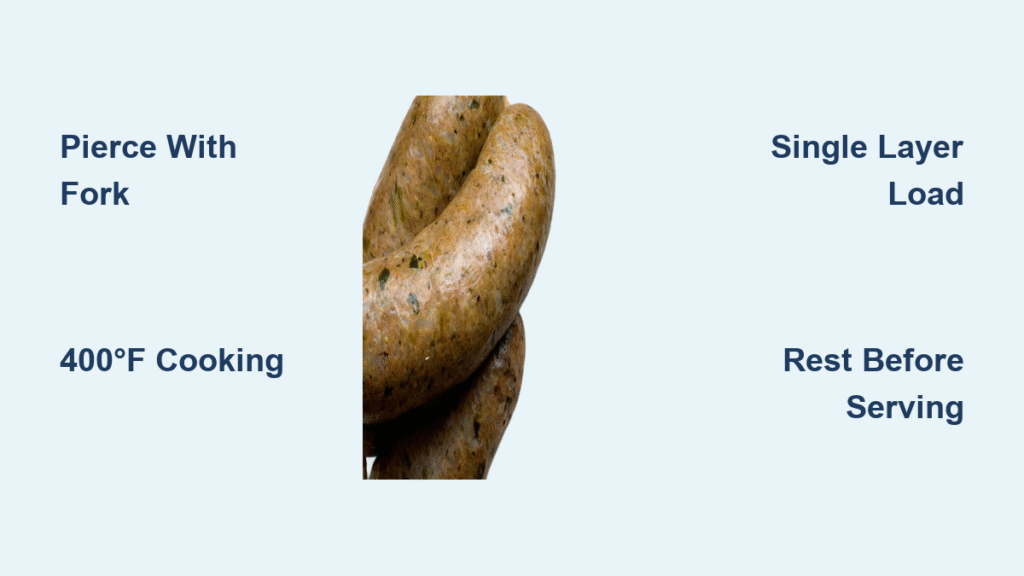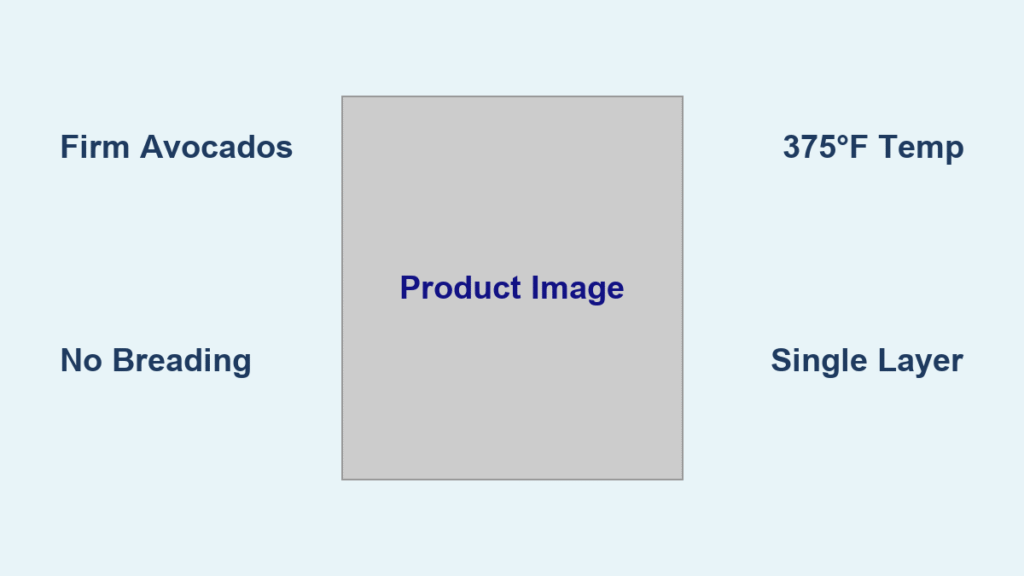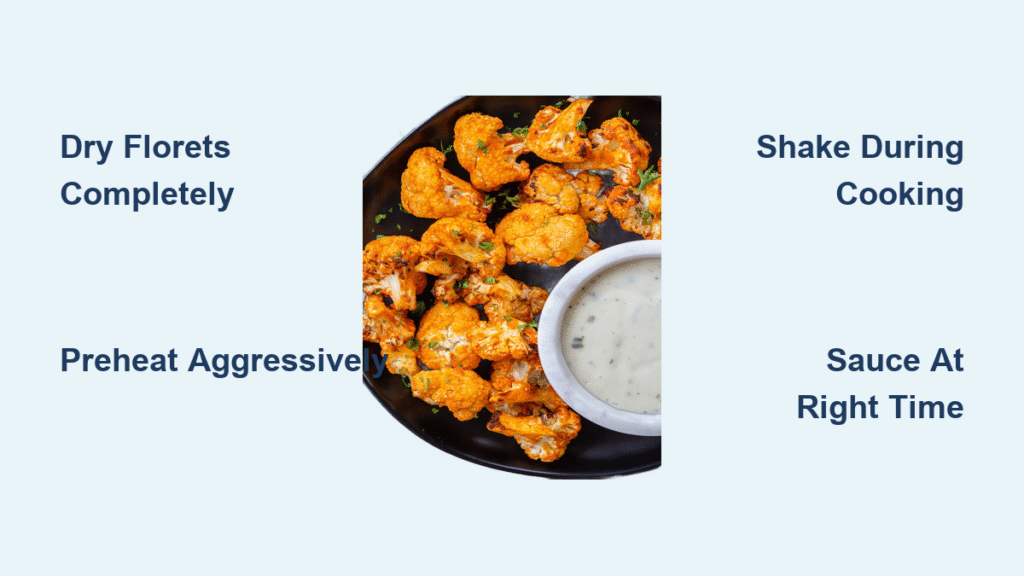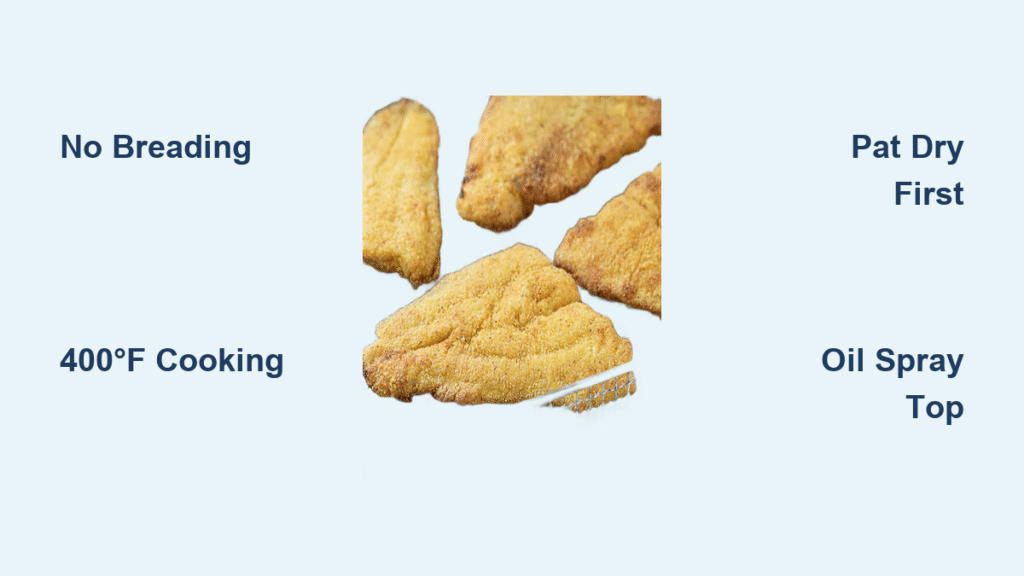That first bite of perfectly reheated boudin—crisp casing giving way to steaming rice filling—is pure Cajun magic. But soggy, burst links or dry interiors ruin the experience. Your air fryer solves this in under 12 minutes without oil splatters or oven preheating. Unlike microwave reheating that creates rubbery texture, air frying delivers golden-brown casings while keeping the seasoned pork and rice filling moist. Follow these exact steps to transform store-bought or homemade boudin into restaurant-quality results. You’ll learn precise timing for fresh links versus frozen balls, avoid common bursting disasters, and discover why three tiny fork pricks make all the difference.
Fix Boudin Links Without Bursting in Air Fryer
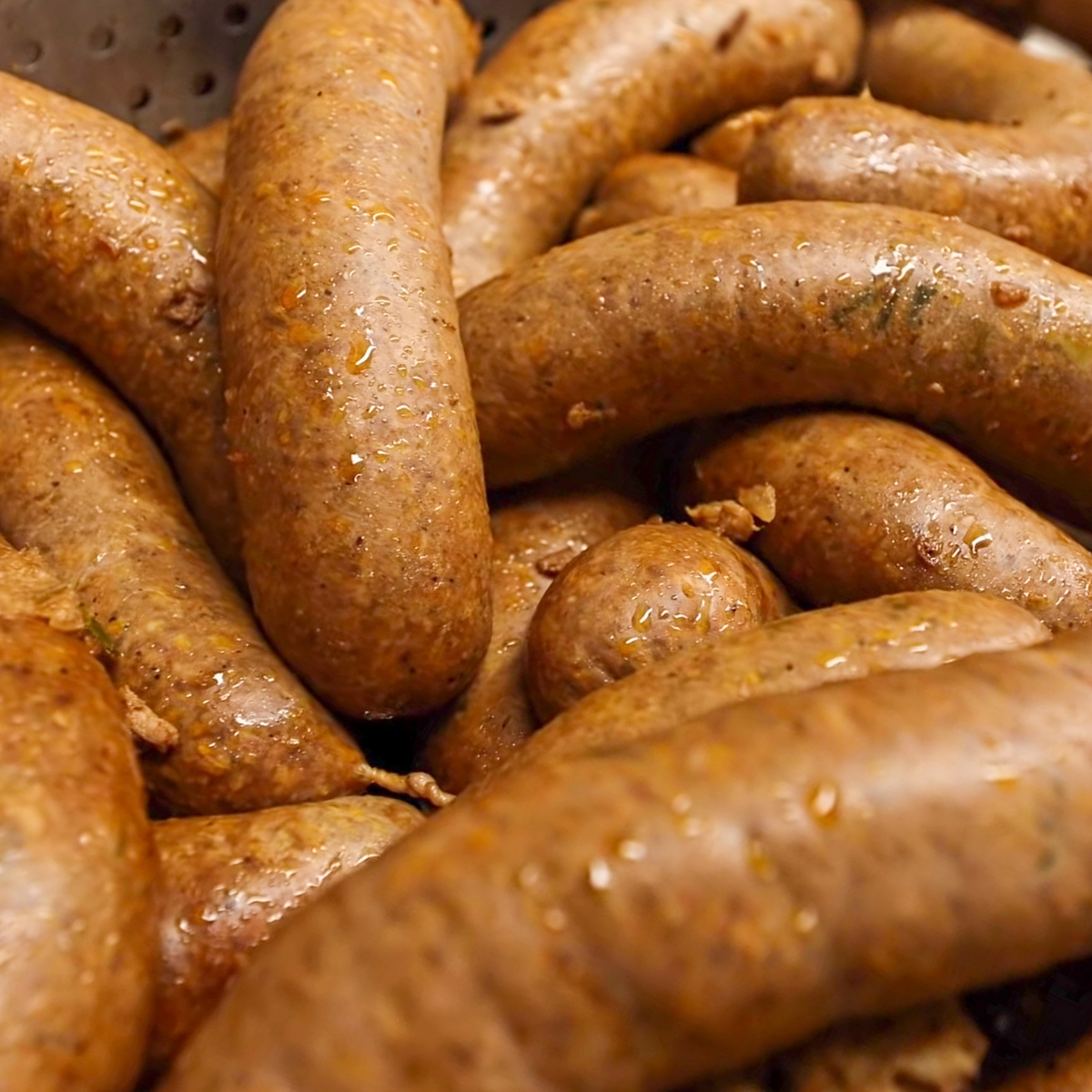
Pierce Casings Before Air Frying
Poke each boudin link three times with a fork—deep enough to penetrate the casing, not just the surface. This critical step releases steam buildup that causes explosive bursting. Fresh boudin needs this most since natural casings tighten dramatically under heat. More holes create rice volcanoes, so stick to exactly three punctures per link. Skip this, and you’ll clean filling out of your air fryer basket.
Load Basket for Maximum Crispiness
Place six links maximum in a single layer with space between each. Overcrowding traps steam, creating soggy spots and uneven browning. For Cosori air fryers, skip oil spray—the non-stick basket prevents sticking naturally. Other brands benefit from a light coating on the basket bottom only (never spray directly on sausages). Arrange links parallel to air vents for optimal circulation.
Set Exact Time and Temperature
Cook at 400°F for 9-12 minutes with a flip at the 5-minute mark using tongs. Fresh links need 9 minutes; refrigerated links require 11-12 minutes. Since boudin is pre-cooked, you’re reheating to 165°F internal temperature for safety, not cooking raw meat. Watch for visible sizzling and deep golden color—these signal perfect crispness. Pull links immediately when golden; overcooking dries the rice filling.
Recognize Perfectly Cooked Boudin
Done boudin has crispy, blistered casing with no pale spots and steaming hot interior when cut. Gently press a link—it should feel firm but yield slightly. Pale casings mean undercooked; hard, dark spots indicate overcooking. If filling crumbles when sliced, you’ve exceeded 12 minutes. For accuracy, insert a meat thermometer into the thickest part—it must read 165°F. Serve within 2 minutes for peak texture.
Air Fry Frozen Boudin Balls Without Sogginess
Preheat for Instant Crisping
Set air fryer to 400°F for 5 minutes before adding frozen balls. This creates immediate searing contact, locking in moisture and preventing greasy bottoms. Skipping preheating results in pale, oil-saturated balls. Arrange balls in one layer with ½-inch spacing—crowding causes steaming instead of crisping. Lightly spray balls with oil only if your air fryer model lacks a non-stick coating.
Cook Until Deep Amber and Sizzling
Air fry 12-15 minutes total, shaking the basket vigorously at 7 minutes to reposition balls. They’re done when deeply amber (not just golden) and sizzling audibly. Frozen balls need the full time—pulling them early leaves cold centers. For extra crunch, spritz with oil during the shake. Never pierce balls; their casing contains the filling during cooking.
Rest to Avoid Burn Hazards
Let boudin balls cool 1 minute on a wire rack before serving. This critical pause allows molten rice filling to settle below scalding temperature while maintaining exterior crispness. Cutting into them immediately risks severe burns from erupting steam. Place a paper towel under the rack to catch stray oil droplets without softening the crust.
Make Homemade Boudin Balls That Hold Shape

Form Balls With Perfect Consistency
Remove casings from three boudin links (yields 15 one-inch balls). If the mixture crumbles, gradually mix in 1-2 teaspoons water until it resembles raw ground beef—cohesive but not wet. For cheese-stuffed balls, press a small pepper Jack cube into the center of each ball. Overhandling makes balls dense, so work quickly with lightly oiled hands.
Create Triple-Layer Breading
Set up three shallow dishes in order:
– Plain Shrimp Fri (for initial adhesion)
– Beaten egg wash (1 egg + 1 tbsp water)
– Panko mixed 50/50 with Shrimp Fri (for crunch)
Roll each ball through all stations, pressing coating gently to adhere. Freeze balls 15-30 minutes before air frying—this chills the fat, preventing collapse during cooking. Skipping freezing guarantees misshapen, flat results.
Air Fry for Crisp Coating and Hot Center
Cook at 400°F for 9-12 minutes, flipping carefully at 5 minutes with tongs. Spray lightly with oil mid-cook for extra crunch. Cheese-stuffed balls need the full 12 minutes to melt the center. They’re done when the panko coating is deep golden and the ball feels hot through the center. Undercooked balls have cool, dense interiors.
Refrigerate Boudin Properly to Avoid Spoilage
Store Cooked Boudin Safely
Place cooled boudin in airtight containers with parchment between layers to prevent sticking. Refrigerate for 3-4 days maximum—never store at room temperature. The rice filling spoils rapidly due to moisture absorption. For links, wrap individually in paper towels before container storage to absorb excess oil.
Freeze for Long-Term Freshness
Flash-freeze boudin balls on a tray for 1 hour before transferring to zip-top bags. This prevents clumping. Store frozen for up to 2 months. For whole links, portion into single servings and vacuum-seal. Thaw overnight in the fridge before reheating—never microwave frozen boudin as it creates uneven texture.
Spot Dangerous Spoilage Signs
Discard immediately if you see:
– Green or blue splotches (mold penetration)
– Slimy film on casing or filling
– Sour or ammonia-like odors
Fresh uncooked boudin lasts only 1-2 days refrigerated—purchase the day you plan to cook it. When in doubt, throw it out; rice-based sausages harbor bacteria faster than meat-only varieties.
Serve Boudin Like a Cajun Pro
Plate Links for Authentic Flavor
Slide hot boudin into toasted French rolls—not hot dog buns—to showcase the filling. Skip barbecue sauce; the sausage’s complex seasoning (pork, onions, peppers) stands alone. Pair with broccoli rabe sautéed with garlic and red pepper flakes for traditional Louisiana contrast. Never serve cold sides; hot boudin needs equally warm accompaniments.
Pair Balls With Signature Dips
Elevate boudin balls with spicy remoulade (mayo, Creole mustard, hot sauce) or cold lager to cut richness. Avoid ketchup—it overpowers delicate flavors. For sweet contrast, offer honey mustard with a dash of cayenne. Keep dips chilled in small ramekins; warm sauces make balls soggy.
Balance Textures With Sides
Serve alongside crispy Cajun fries and vinegar-based coleslaw. The slaw’s acidity cuts through boudin’s richness, while cool temperature balances the hot sausage. Add dill pickle spears for salty crunch. Never pair with heavy starches like mashed potatoes—they compete with the rice filling.
Fix Common Air Fryer Boudin Mistakes
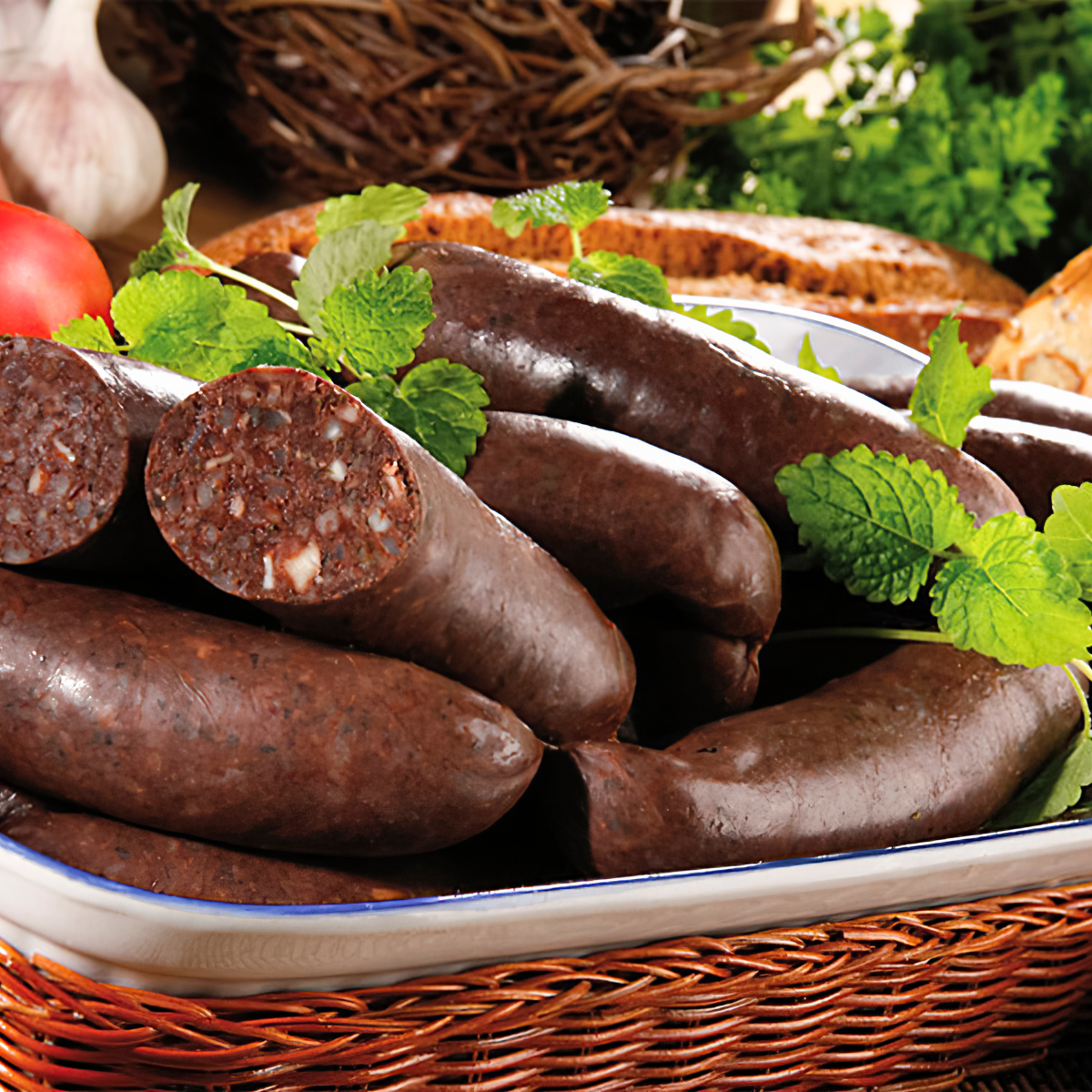
Stop Bursting Casings Immediately
Bursting happens when you pierce more than three times or overcrowd the basket. Steam needs controlled escape routes—extra holes let filling gush out. Cook in batches if needed. For recurring issues, reduce temperature to 375°F and add 2 minutes cooking time. Cosori users rarely face this due to superior air circulation.
Cure Pale, Soft Results
Pale boudin means temperature too low or inadequate preheating. Always verify 400°F with an external thermometer. Overloading the basket creates steam pockets that prevent browning. For balls, preheating is non-negotiable—cold starts guarantee soggy bottoms. If using oil spray, apply only to the basket, not the food.
Prevent Dry Rice Filling
Overcooking is the culprit. Pull fresh links at 9 minutes and refrigerated links at 11 minutes. The filling should steam vigorously when cut—not crumble or feel dry. For extra insurance, spritz links with water before air frying. Never reheat twice; freeze leftovers instead of refrigerating cooked boudin.
Master these techniques and you’ll serve boudin with crackling casings and molten-hot filling every time. The air fryer’s rapid heat circulation crisps exteriors while preserving the delicate rice interior that defines great boudin. Remember the holy trinity: three fork pricks, 400°F, and single-layer cooking. Store leftovers properly using the flash-freeze method, and always let balls rest before serving. In under 12 minutes, you’re not just reheating sausage—you’re resurrecting Cajun tradition with modern convenience. Your guests won’t believe it came from a countertop appliance.

